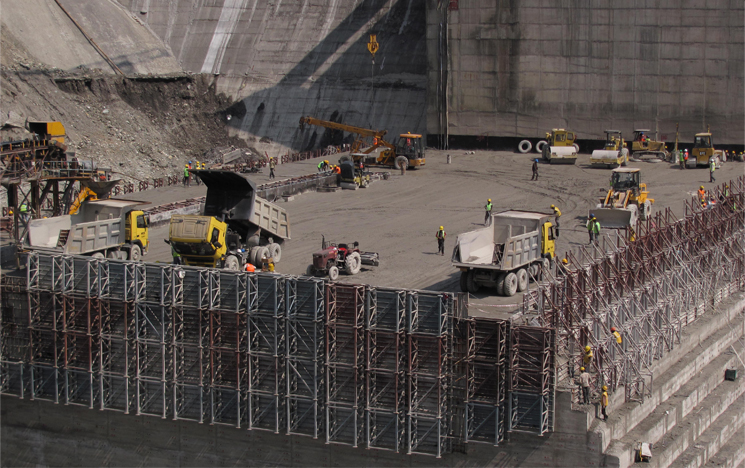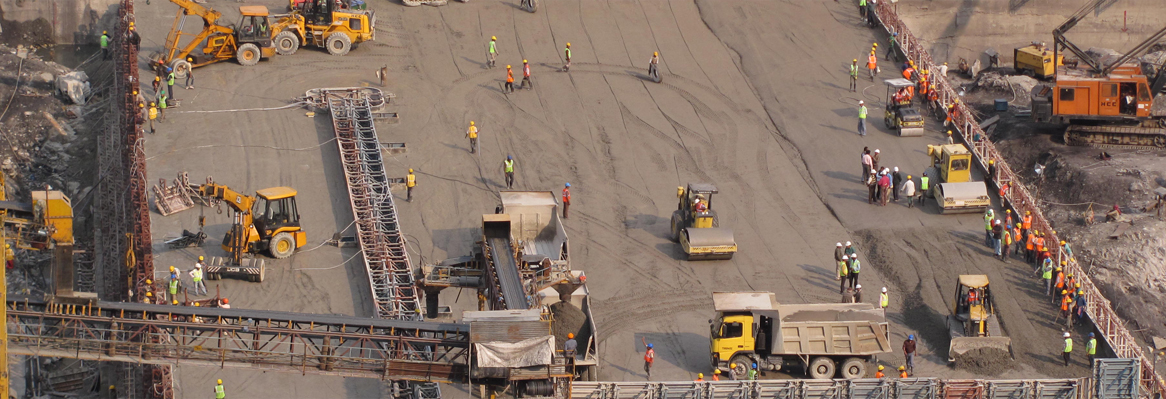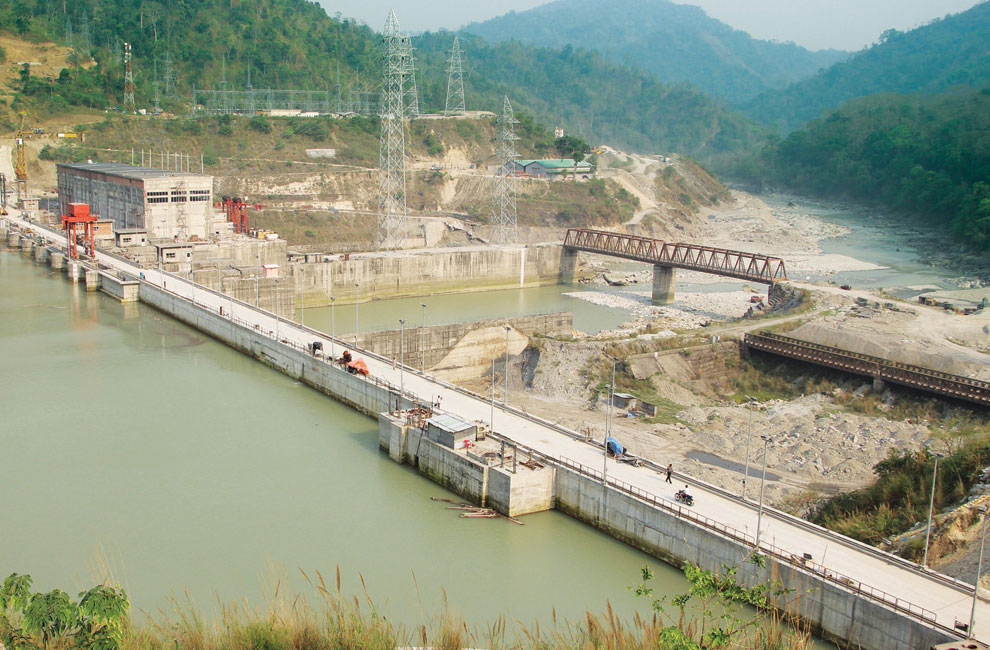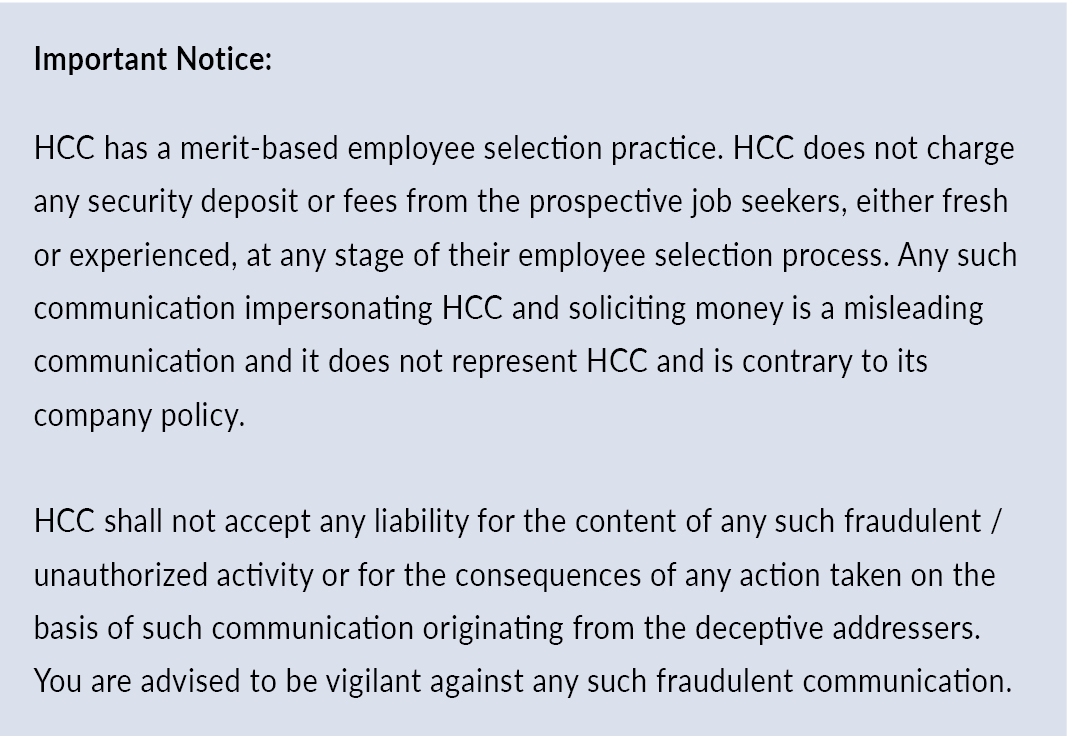

Building 196 m RCC Dam in 196 Days – Teesta IV Low Dam
With an installed capacity of 160MW to produce 720 million units of power the Teesta Low Dam Project – IV is the fourth Hydroelectric project to be built on river Teesta, around 25 Km from Siliguri in West Bengal. This is the first Roller Compacted Concrete (RCC) dam being constructed for the NHPC and is only the third of its kind in India. It is also the first RCC dam being built in the younger Himalayas.
This 521 m long, 30 m high dam has three segments – viz. the power dam and surface power house on the left embankment, spillways in the middle, and 200m long Roller Compacted Concrete (RCC) dam.
HCC successfully built 196 m RCC dam in 196 days.
Inside the project
RCC dam construction requires huge set-up for continuous feeding of concrete. HCC had set up huge crusher plant to produce aggregates, silos for storing and processing aggregates, batching and mixing plants, chilling plants and ice flex manufacturing plants. All these plants were connected by a web of conveyor belts to carry the RCC at the dam location.
RCC has essentially the same ingredients as conventional concrete but contains much less water. It is laid layer by layer and is compacted using rollers. Each layer is continuously cured and kept alive (by using chemicals called retarders, which delay the setting process of concrete) until the next layer covers it. Thus the concrete is placed layer by layer in succession without any discontinuity, creating a monolithic dam.

What really mattered
RCC dam construction process is a continuous 24X7 operation without stoppage, HCC engineers had to overcome many challenges to maintain the continuity of work.1. Managing continuous supply chain
- Approximately 115 tons of fly ash was required on a daily basis, which was procured from thermal power plant is around 320 km from the project location.
- Around 75 tons of cement was required on a daily basis which was procured from Darjeeling which is around 50 km from the project location.
- Around 2500 tons of boulders were required on a daily basis, which were handpicked from a site indentified by NHPC which was 25 km from the project.
2. Synchronisation of equipment:
- Over 4000 ton of aggregate was required everyday. HCC had to install a special type of four stage crusher plant to produce aggregates.
- Three fully automated batching and mixing plants for 24X7 operations were installed. Each plant had a capacity to produce over 120 cubic meters / hour of RCC. Of these, two were operated simultaneously whereas a third was kept as back-up.
- Along with this an ice plant and a chilling plant was installed at the site for controlling the temperature of RCC during production.

3. Excavation for Foundation
- During the excavation of the dam foundation several streams of loose coal seam were found trapped in the bed rock level. When it comes in contact with water, it turns mushy. Because the RCC could not be built on a loose foundation, these coal seams had to be removed carefully by hands before the RCC work begins.
4. Maintenance of equipment
- As RCC is a continuous process and a huge web of equipment is continuously in operation, maintaining these equipments was very critical. Even a small snag in one equipment could halt the entire chain.
Image Gallery
 +91 22 25751000
+91 22 25751000 contactus@hccindia.com
contactus@hccindia.com Supplier Portal
Supplier Portal- Connect With Us





